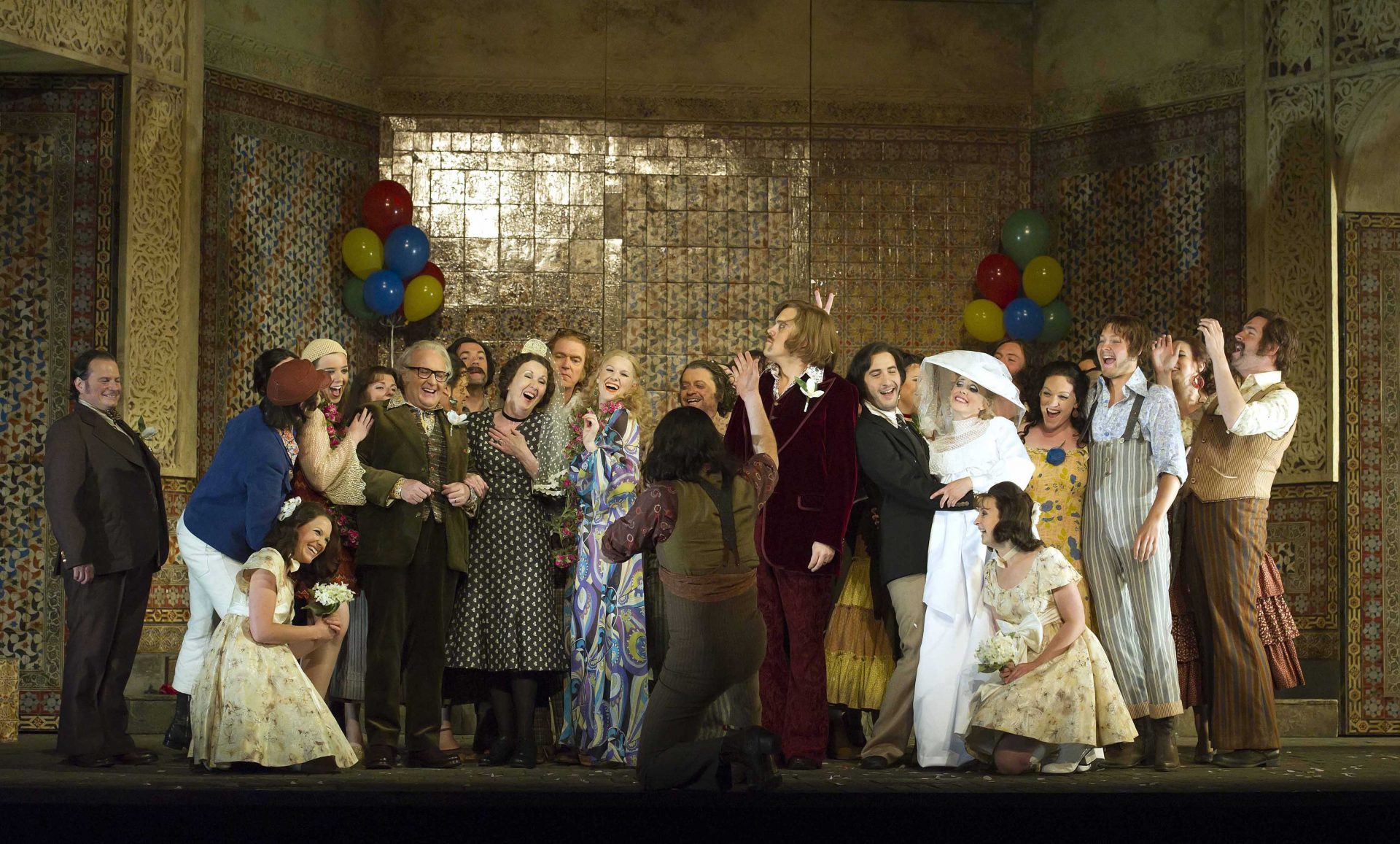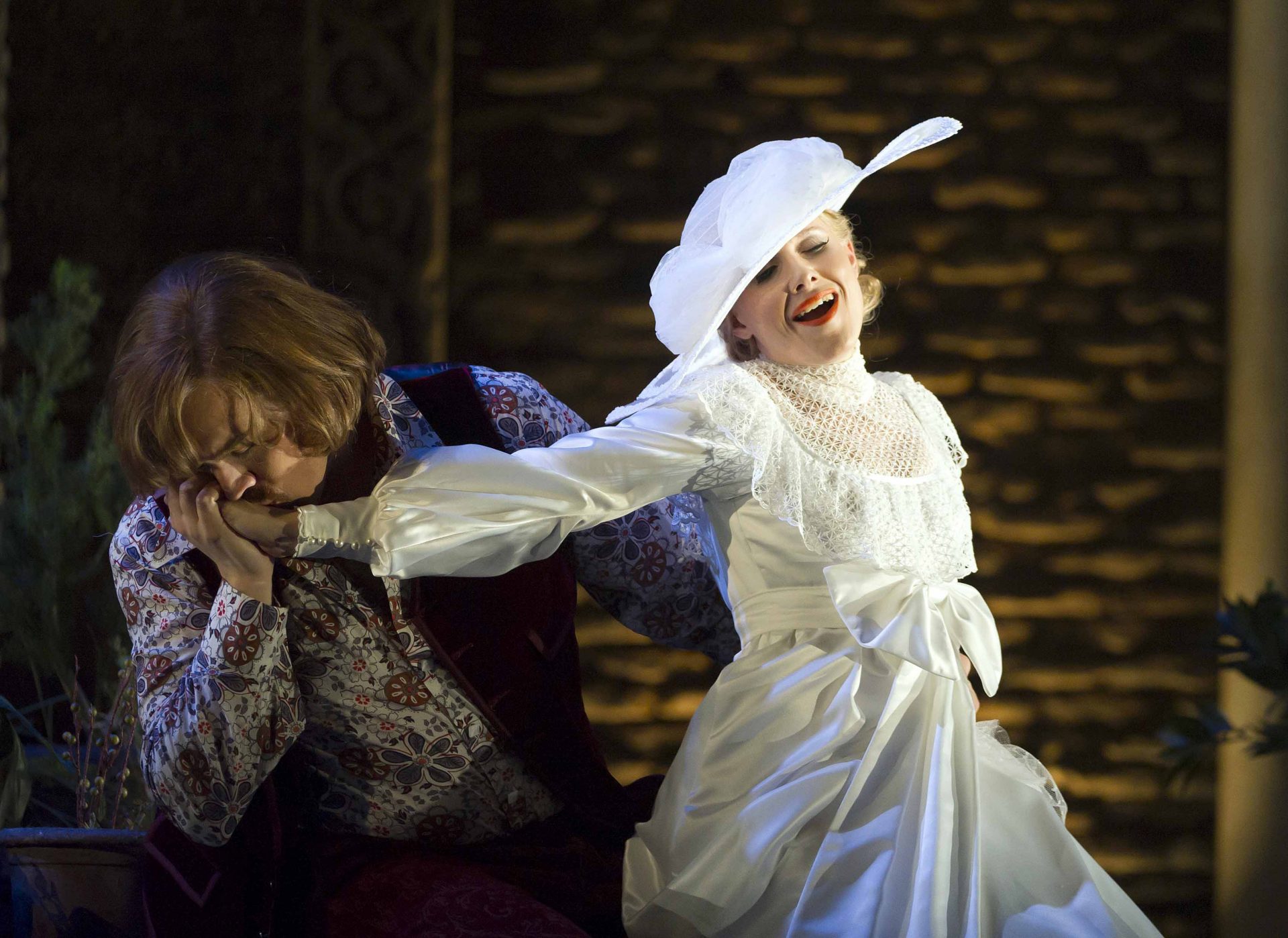
Introducing... The Marriage of Figaro
Everything you need to know about Mozart's The Marriage of Figaro.
In the video below Alexandra Coghlan talks to actor and director Fiona Shaw about her first encounter with the opera.
A brief introduction

The Marriage of Figaro (1786) was a turning point for the 30-year-old Mozart’s operatic status. It caused a sensation at its Prague staging – the young composer reaching full and startling musical maturity. It was also his first collaboration with librettist Lorenzo Da Ponte, with whom he would go on to create Don Giovanni and Così fan tutte. It was a relationship that caught both author and composer at their peak, each challenging the other, pushing both to greater invention and originality than ever before.
The young Mozart was keen to work with the older, more established Da Ponte, and it was his bold plan to adapt French dramatist Pierre Beaumarchais’s scandalous 1778 play about an unfaithful Count determined to seduce his valet’s pretty fiancée that finally sealed the deal. In Da Ponte’s hands the play’s revolutionary ideas were softened and people, not politics, became the focus of a work that delicately unpicks the power structures and currents of emotions between masters and servants in the Almaviva estate outside Seville.
Courtly delicacy and melodic beauty are just the top layer of an extraordinarily rich score, which is at once a charming musical comedy of manners – gossamer-light and infinitely decorative – and a deeper, darker portrait of true human passions. Mozart finds real pathos in the romantic tangles of Cherubino and the Countess, who both long for a love they cannot have. Figaro too, though quick-witted and comic, has a seam of ferocity, cruelty even, which just occasionally curdles the sweetness of this domestic intrigue. This is comedy poised on a musical knife-edge.
Why not to miss it

Praised by The Telegraph as, ‘A Figaro of rare grace, naturalness and charm’, this ‘keenly observed’ 2012 production is the latest in a long line of memorable Glyndebourne stagings of Mozart’s opera, stretching back to the Festival’s first ever season in 1934.
Celebrated British director Michael Grandage updates the action from the 18th century to the 20th and the dying days of Spain’s Franco regime. Christopher Oram’s ‘handsome designs’ and ‘sumptuous’ sets place us firmly in the 1960s – a fantasy of sleek sports cars, short skirts, Pucci prints and Alhambra-inspired interiors.
Grandage mines this cusp of a historical moment for all its political and social potential, exploring a period of radical change and class conflict with many echoes of Beaumarchais’s original setting.
A great moment to look out for
One of the opera’s most exquisite moments is the Act III duet ‘Sull’aria…che soave zeffiretto’ for Susanna and the Countess, latterly made famous by The Shawshank Redemption. Here the two women conspire to teach the Count a lesson.
The Countess dictates a lesson from Susanna to her husband. The sensual promise of the encounter is implicit in the gracefully unfolding lines for the two voices, which echo and dovetail one another before finally coming together in rapturous cadence. Cushioned on softly murmuring strings, capturing the soft wind in the pine trees that Susanna describes, the duet is all bucolic beauty, warmth and gentle eroticism.
Cast and creative team



The Marriage of Figaro will be conducted by Stephanie Childress, a rising star on the stage of international conductors. She rose to prominence as a string finalist in BBC Young Musician of the Year in both 2016 and 2018, and is also a gifted violinist. During the summer of 2021 she joined the music staff at the Festival to assist on Il turco in Italia and conduct the Glyndebourne Chorus for Luisa Miller and we are thrilled to welcome her back to conduct The Marriage of Figaro and Mozart’s Requiem for this year’s Tour.
The cast includes Glyndebourne favourites Nardus Williams (Ann in last year’s production of The Rake’s Progress) as the Countess and Henry Waddington (who played the title role in Tour 2015’s Saul) as Bartolo.
Image credits: Illustration © Katie Ponder | Le nozze di Figaro, Festival 2012, photos by Alastair Muir














